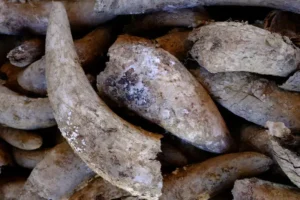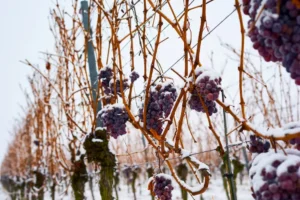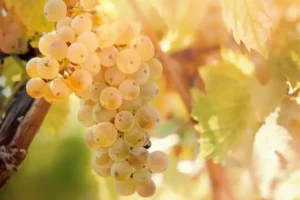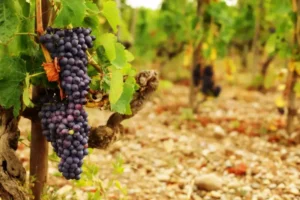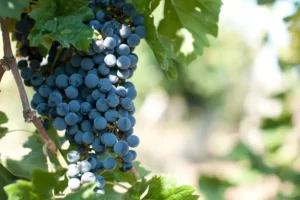What is Albariño?
Albariño is a white grape variety mainly grown in Spain and Portugal, where it is known as Alvarinho. It produces light-bodied, crisp and refreshing wines with high acidity. They are characterised by lime, grapefruit and rich peach aromas and a dash of salinity.
What does Albariño taste like?
Albariño is light-bodied with zippy acidity and a mouth-watering salinity. Full of aromas of peach and nectarine, lemon, lime and grapefruit along with delicate white flowers like honeysuckle, some hints of grass and a breeze of sea spray.
Albariño wines are usually easy-drinking and meant to be drunk young. But they can also have a great ageing potential thanks to their high acidity and structure.
You can also find examples aged on lees and/or in oak, giving a richer texture, with extra complexity and creaminess on the palate.
Albariño Flavour Profile
- Body: Light to medium
- Acidity: High
- Sweetness: Dry to off-dry
- Fruit flavours: Lemon, lime, peach, apricot, melon
- Other notes: Saline, floral, almond, slightly bitter citrus peel finish
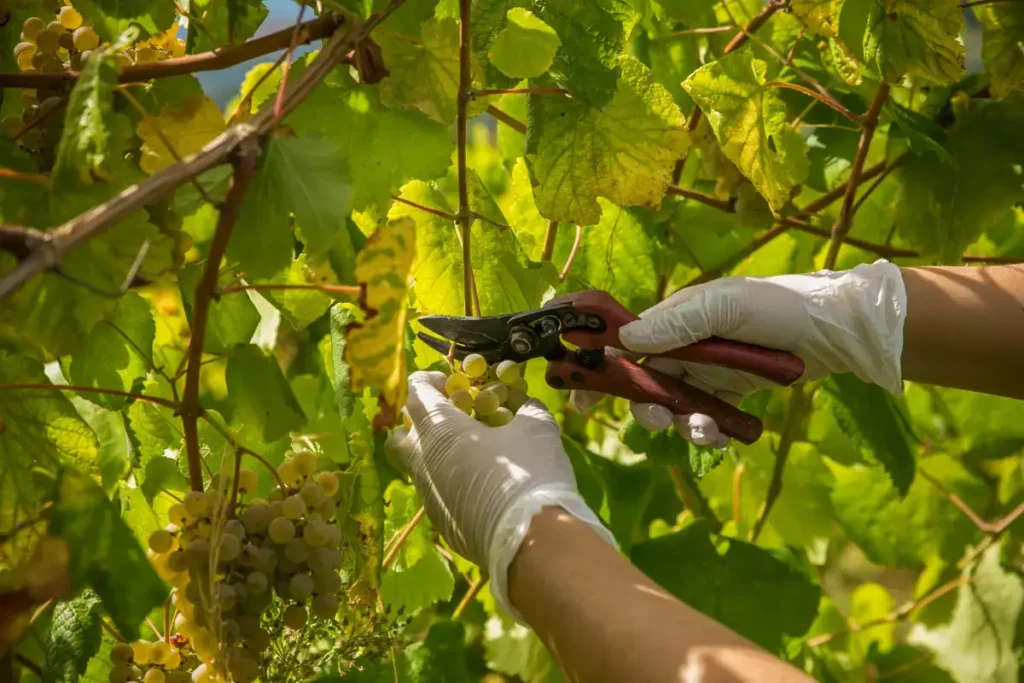
What food goes with Albariño?
As a coastal wine, Albariño matches wonderfully with anything from the sea but is incredibly versatile.
Fish
It will pair perfectly with fish such as cod, halibut or salmon. Try it with fish tacos, ceviche, sushi or sashimi or even your favourite fish and chips.
Seafood
It also complements any kind of seafood from oysters, clams and mussels to grilled prawns, scallop carpaccio and spaghetti alle vongole.
Cheese
If you are looking for a partner for soft and creamy cheeses such as mozzarella, burrata or goat’s cheese and semi-hard cheeses like feta, manchego and gouda, look no further than Albariño.
Vegetables
Salads and grilled vegetables make great pairings with the citrus and grassy aromas found in Albariño. Enjoy on a sunny day with a greek, caesar or niçoise salad, burrata and tomato, grilled vegetables or Spanish tapas.
Where do you find Albariño?
Albariño grows in cool or moderate climates with cooler air currents or coastal conditions.
Even if the grape is still sensitive to rot and mildew, its thick skins allow it to grow in high-altitude regions by the sea as long as they have well-draining soils like granite or sand.
Although it is grown all over the world in California, Uruguay, Argentina, Chile, Brazil or even Australia and Canada, the main two regions for Albariño are Spain and more specifically the Rías Baixas area in Galicia, and Portugal with most of it being grown in the Vinho Verde region.
Rías Baixas, Spain
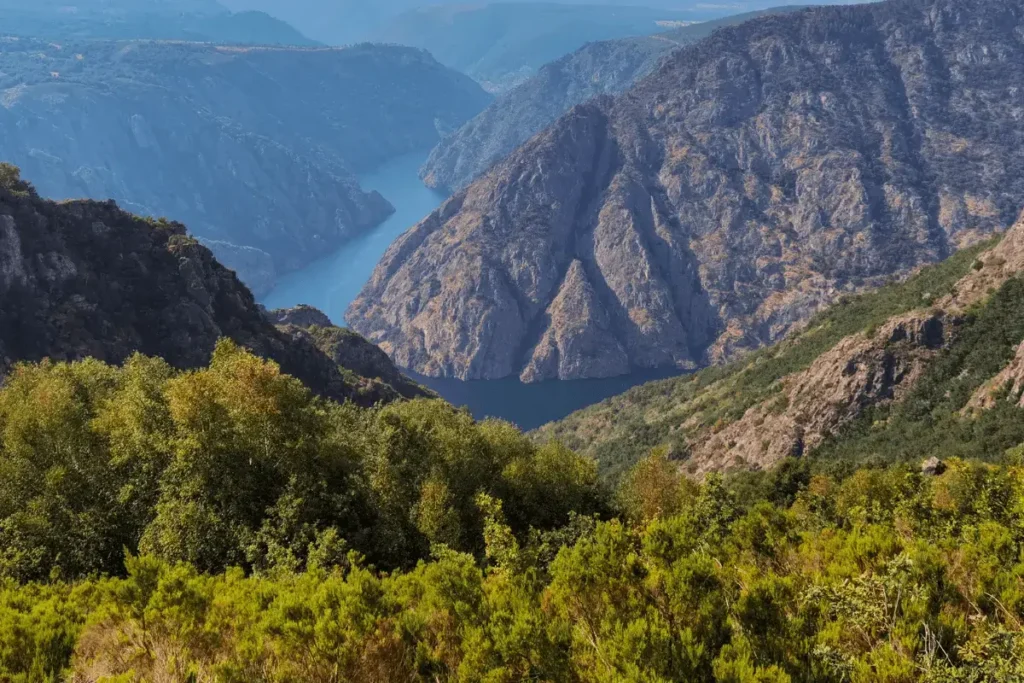
Rías Baixas is found in Galicia, at the extreme north-west of Spain, between the sea and the Portugal border. Its name means Lower Estuaries, referring to the four estuaries (Muros y Noia, Arousa, Pontevedra and Vigo) all along the area.
Albariño wines from Rías Baixas will typically have aromas of grapefruit, nectarine, peach, apricot, honeysuckle and hints of grassiness.
We can find five sub-regions in the Rías Baixas:
- Ribeira do Ulla: The most northerly area, it is located inland along the Ulla river, resulting in a more moderate climate, producing fruitier wines.
- Val do Salnés: Considered as the birthplace of Albariño, the region runs along the coast between Ria de Arousa and Ria de Pontevedra. Its coastal location produces wines full of salinity and minerality.
- Soutomaior: Producing super mineral and saline wines, this sub-zone is the smallest of the five, sitting on one of the estuaries – Ria de Vigo.
- Condado do Tea: Bordering Portugal and the Miño River, this area is more inland than the others, resulting in fruitier and richer wines.
- O Rosal: Forming the rest of the Portugal border, this region faces the Miño River and the Atlantic Ocean, giving fruity, mineral wines..
Vinho Verde, Portugal
Vinho Verde means Green Wine and the DOC area is divided into nine different sub-regions, sometimes mentioned together with Vinho Verde on the label: Monção e Melgaço, Lima, Cávado, Ave, Basto, Sousa, Amarante, Baião and Paiva.
White, red and rosé wines are produced in the region but it is mainly known for Portugal’s famous and much-loved bright, dry, spritzy, low alcohol and peachy white wine.
Vinho Verde white wines are usually blends of white grape varieties allowed in the area. Even if most of the time the exact blend is unknown, Alvarinho usually makes part of it.
But you also find single variety Albariño wines in the Vinho Verde region that can be referred to as Vinho Alvarinho, from the Monção e Melgaço area. Bordering Spain, this area has a warmer climate because of the hills stopping heavy rains. This results in wines that typically have more alcohol (11.5 to 14%) and ripe tropical aromas.
Alvarinho wines from the Vinho Verde region are characterised by flavours of lime, lemon, grapefruit, honeysuckle and tropical notes of honeydew.
Other Regions Growing Albariño
Albariño can also be found in other wine regions over the world, such as San Luis Obispo in California and Uruguay, where the climate is similar to Galicia with coastal ocean breeze to moderate the temperatures, making mineral-driven wines.

